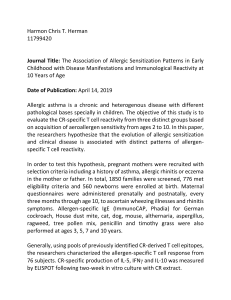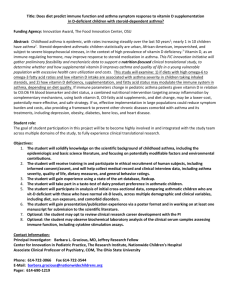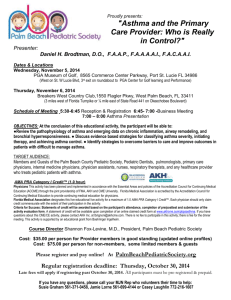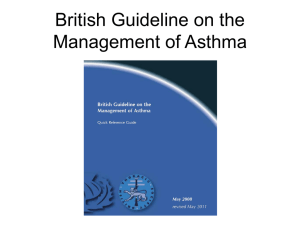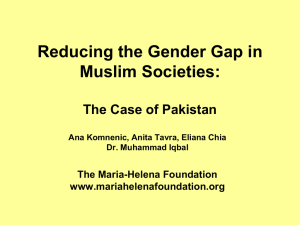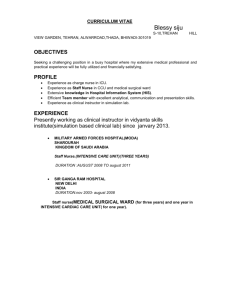Diet and childhood asthma in a society in transition
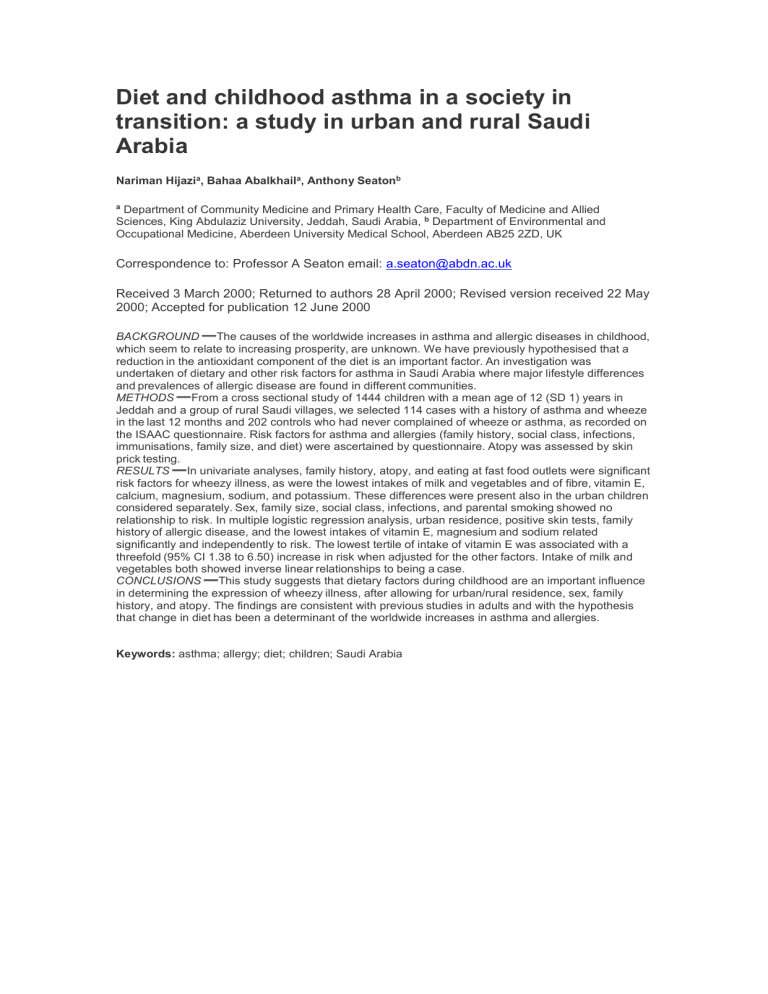
Diet and childhood asthma in a society in transition: a study in urban and rural Saudi
Arabia
Nariman Hijazi a , Bahaa Abalkhail a , Anthony Seaton b a Department of Community Medicine and Primary Health Care, Faculty of Medicine and Allied
Sciences, King Abdulaziz University, Jeddah, Saudi Arabia, b Department of Environmental and
Occupational Medicine, Aberdeen University Medical School, Aberdeen AB25 2ZD, UK
Correspondence to: Professor A Seaton email: a.seaton@abdn.ac.uk
Received 3 March 2000; Returned to authors 28 April 2000; Revised version received 22 May
2000; Accepted for publication 12 June 2000
BACKGROUND The causes of the worldwide increases in asthma and allergic diseases in childhood, which seem to relate to increasing prosperity, are unknown. We have previously hypothesised that a reduction in the antioxidant component of the diet is an important factor.
An investigation was undertaken of dietary and other risk factors for asthma in Saudi Arabia where major lifestyle differences and prevalences of allergic disease are found in different communities.
METHODS From a cross sectional study of 1444 children with a mean age of 12 (SD 1) years in
Jeddah and a group of rural Saudi villages, we selected 114 cases with a history of asthma and wheeze in the last 12 months and 202 controls who had never complained of wheeze or asthma, as recorded on the ISAAC questionnaire. Risk factors for asthma and allergies (family history, social class, infections, immunisations, family size, and diet) were ascertained by questionnaire.
Atopy was assessed by skin prick testing.
RESULTS In univariate analyses, family history, atopy, and eating at fast food outlets were significant risk factors for wheezy illness, as were the lowest intakes of milk and vegetables and of fibre, vitamin E, calcium, magnesium, sodium, and potassium. These differences were present also in the urban children considered separately.
Sex, family size, social class, infections, and parental smoking showed no relationship to risk. In multiple logistic regression analysis, urban residence, positive skin tests, family history of allergic disease, and the lowest intakes of vitamin E, magnesium and sodium related significantly and independently to risk. The lowest tertile of intake of vitamin E was associated with a threefold (95% CI 1.38 to 6.50) increase in risk when adjusted for the other factors. Intake of milk and vegetables both showed inverse linear relationships to being a case.
CONCLUSIONS This study suggests that dietary factors during childhood are an important influence in determining the expression of wheezy illness, after allowing for urban/rural residence, sex, family history, and atopy. The findings are consistent with previous studies in adults and with the hypothesis that change in diet has been a determinant of the worldwide increases in asthma and allergies.
Keywords: asthma; allergy; diet; children; Saudi Arabia



